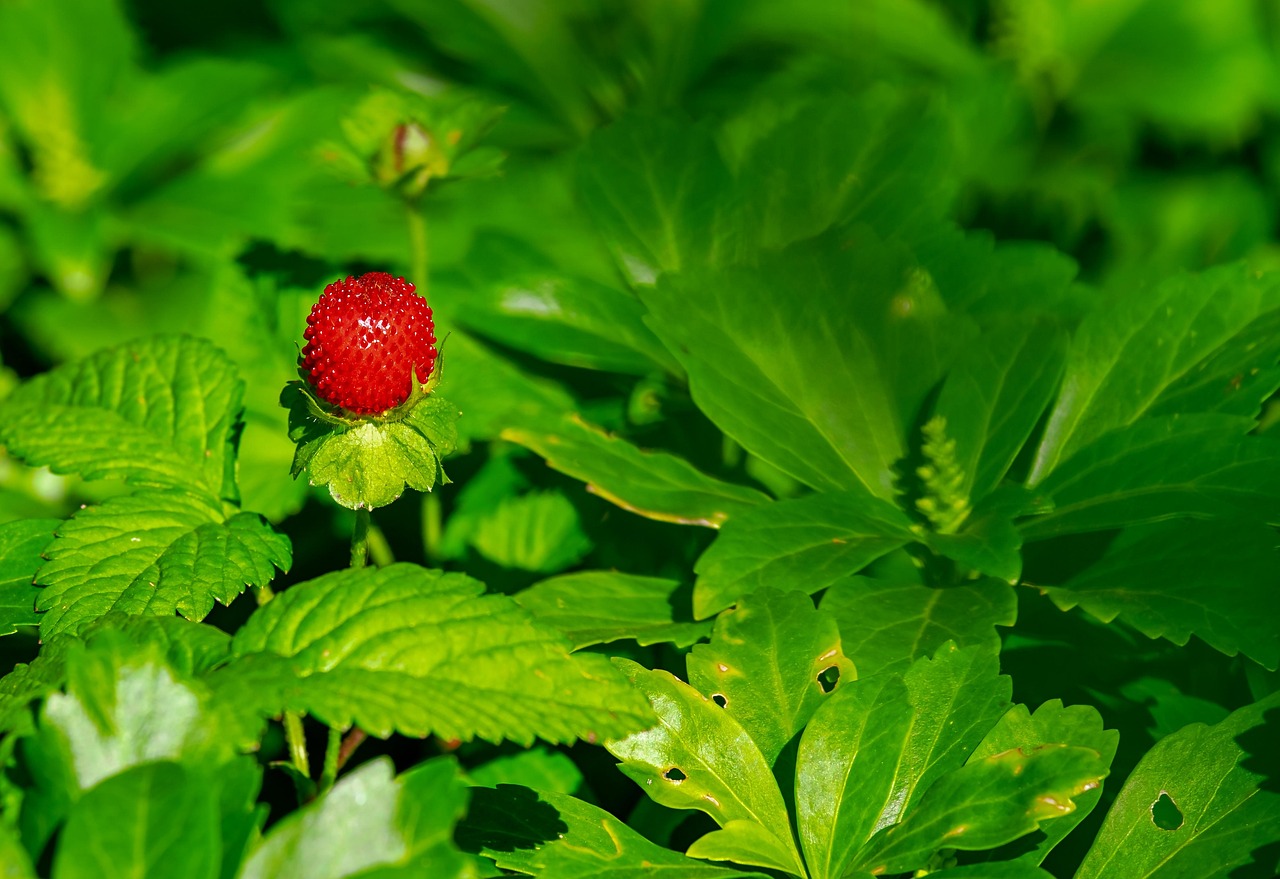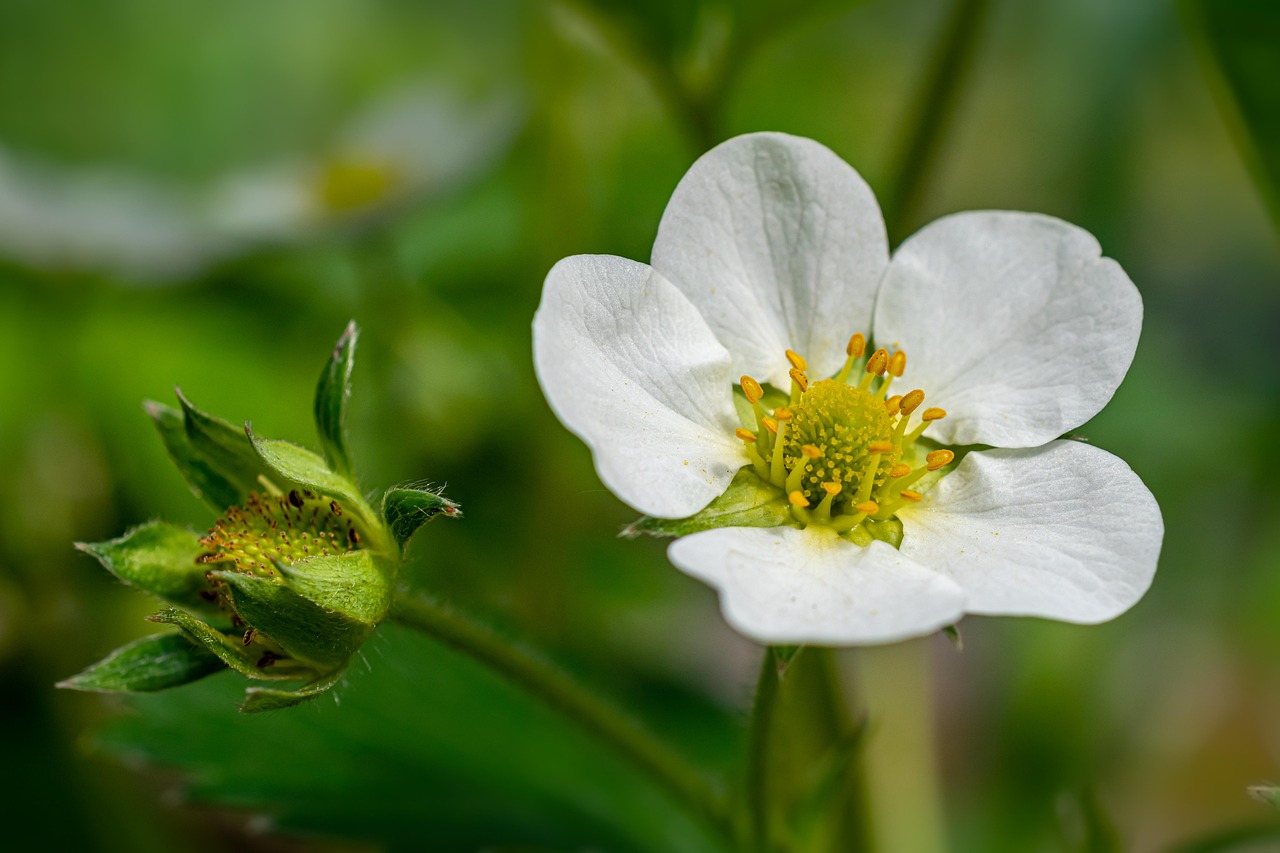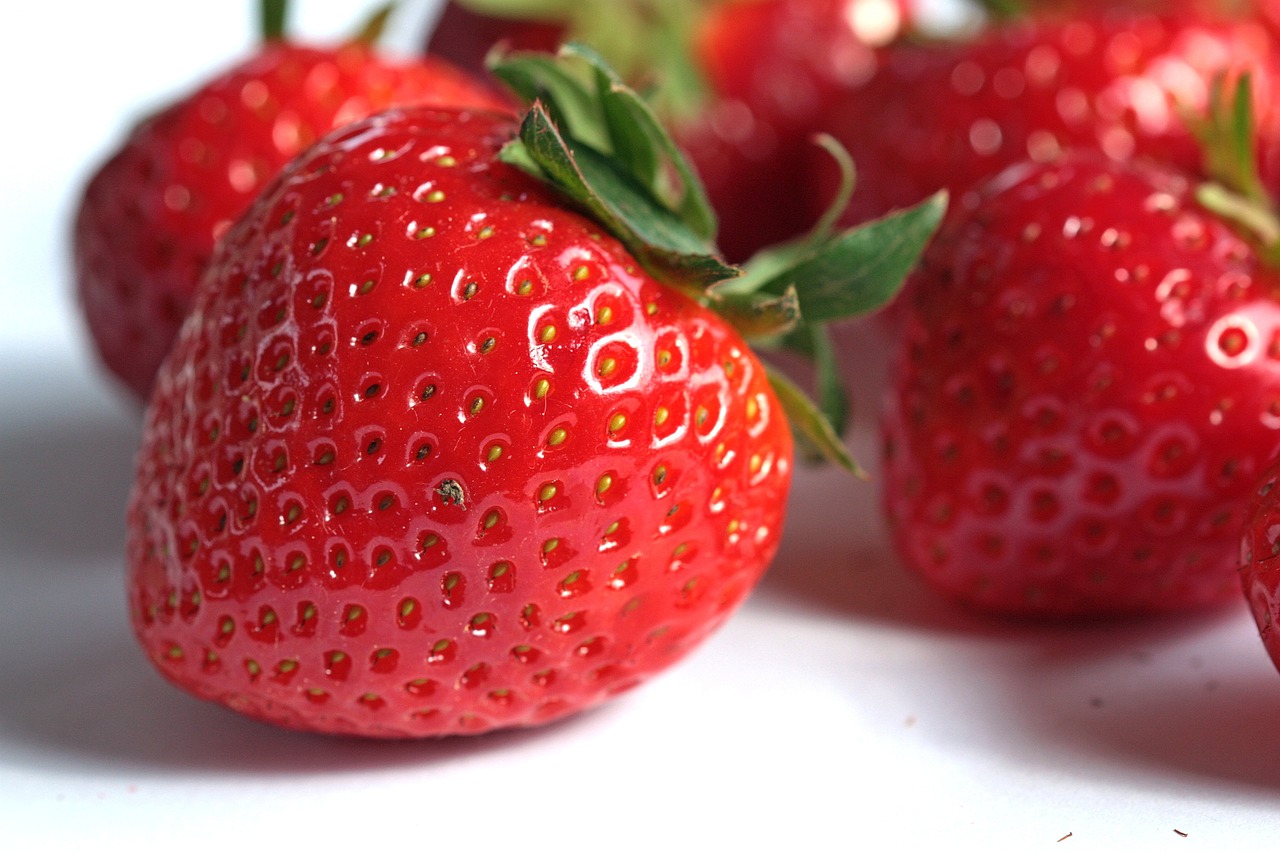To grow everbearing strawberry plants successfully, select a sunny location, use well-drained soil, and water regularly. Fertilize every few weeks and ensure to protect the plants from pests. Additionally, proper pruning and timely harvesting will promote healthy growth and maximize fruit yield.
Everbearing strawberries are a popular choice among gardeners due to their ability to produce fruit throughout the growing season. Unlike June-bearing varieties that yield a single large harvest, everbearing strawberries can bear fruit in early summer, late summer, and even into fall. This characteristic makes them ideal for home gardeners who want a continuous supply of fresh strawberries.

Growing everbearing strawberries requires attention to several key factors. These include selecting the right variety, understanding soil requirements, and providing adequate care throughout the growing season. By following these guidelines, you can enjoy a bountiful harvest of sweet strawberries.
Choosing the Right Variety
When selecting everbearing strawberry plants, it is essential to choose varieties suited for your climate and growing conditions. Some popular everbearing varieties include:
- Albion
- Seascape
- Quinault
- Sweet Charlie
- Fort Laramie
Each variety has unique characteristics such as flavor, size, and disease resistance. Consider factors like your local climate, soil type, and intended use when making your selection. For example, if you live in a warmer region, varieties like Albion or Seascape may thrive better.

Soil Requirements
The success of your everbearing strawberry plants significantly depends on the quality of the soil. Here are essential soil characteristics to ensure optimal growth:
| Soil Characteristic | Ideal Condition |
|---|---|
| Drainage | Well-drained soil to prevent root rot |
| pH Level | 6.0 to 6.8 for best nutrient availability |
| Nutrient Content | Rich in organic matter; consider compost or well-rotted manure |
| Texture | Sandy loam is preferred for good aeration |
Before planting, test your soil to determine its pH level and nutrient content. Amend the soil as necessary to create an ideal environment for your strawberries. Adding organic matter not only improves soil structure but also enhances moisture retention.
Planting Techniques
Once you have selected your variety and prepared the soil, it’s time to plant your everbearing strawberry plants. Here are some steps to follow:

- Choose a planting date in early spring or late summer.
- Space plants about 12 to 18 inches apart to allow for growth.
- Dig holes deep enough to accommodate the root system without bending the roots.
- Place the plant in the hole so that the crown is level with the soil surface.
- Water thoroughly after planting to help establish root contact with the soil.
Consider using raised beds or containers if your soil drainage is poor. This method also helps in controlling weeds and pests more effectively.
Caring for Everbearing Strawberries
Caring for your everbearing strawberry plants involves regular maintenance practices that promote healthy growth and fruit production. Key care tips include:
- Watering: Keep the soil consistently moist but not waterlogged, especially during dry spells.
- Fertilizing: Use a balanced fertilizer every few weeks after planting for robust growth.
- Pest Management: Monitor for pests like aphids and spider mites. Use organic pesticides if necessary.
- Pruning: Remove runners and dead leaves to encourage better air circulation and fruit production.
By adhering to these care practices, you will help ensure that your everbearing strawberry plants thrive and produce delicious fruit throughout the season.

Harvesting Everbearing Strawberries
Harvesting everbearing strawberries is crucial to enjoying the fruits of your labor. Knowing when and how to harvest will ensure the best flavor and quality. Everbearing strawberries typically produce fruit in cycles, so timing is essential.
Here are some tips for harvesting:
- Timing: Check your plants regularly. Strawberries are ready to be harvested when they are fully colored and slightly firm to the touch.
- Technique: Use scissors or garden shears to cut the stem just above the berry, leaving a small portion of the stem attached to the fruit.
- Frequency: Harvest every few days during peak production times. This can encourage further fruit development.
- Storage: Store harvested strawberries in a cool, dry place. Avoid washing them until you are ready to eat, as moisture can lead to spoilage.
By following these guidelines, you can enjoy fresh strawberries throughout the growing season.
Dealing with Pests and Diseases
Protecting your everbearing strawberry plants from pests and diseases is vital for a successful harvest. Some common pests and diseases to watch for include:
| Pest/Disease | Symptoms | Control Methods |
|---|---|---|
| Aphids | Distorted leaves, sticky residue on leaves | Use insecticidal soap or neem oil |
| Spider Mites | Webbing on leaves, speckled foliage | Increase humidity or use miticides |
| Powdery Mildew | White powdery spots on leaves | Avoid overhead watering and apply fungicides |
| Root Rot | Wilting plants, darkened roots | Avoid overwatering; improve drainage |
Regular monitoring of your plants will help you catch any issues early. Employing preventive measures will also contribute to healthier plants.
Winter Care for Everbearing Strawberries
Caring for everbearing strawberries during the winter months is essential, especially in regions with cold climates. Preparing your plants for winter can ensure they survive and thrive in the next growing season.
- Mulching: Apply a layer of mulch around the base of the plants. This insulation helps protect the roots from freezing temperatures.
- Watering: Ensure that your plants are well-watered before the ground freezes. Moist soil can help retain warmth.
- Covering: In areas with harsh winters, consider covering your strawberry beds with row covers or cloches to provide extra protection.
- Pruning: After the last harvest in fall, remove any dead or diseased leaves to prevent pests from overwintering in your garden.
Taking these steps will prepare your everbearing strawberry plants for winter and promote healthy growth in spring.
Fertilization Schedules
Fertilizing everbearing strawberries adequately is crucial for robust growth and fruit production. A well-planned fertilization schedule helps ensure that your plants receive essential nutrients at the right times.
The following table outlines a general fertilization schedule:
| Time of Year | Fertilizer Type | Application Rate |
|---|---|---|
| Early Spring (Before Planting) | Balanced Fertilizer (10-10-10) | 1 cup per 10 feet of row |
| Mid-Spring (After Planting) | Nitrogen-rich Fertilizer (e.g., urea) | 1/4 cup per plant |
| Summer (During Fruit Set) | P-K Fertilizer (high in phosphorus and potassium) | 1/4 cup per plant every 4 weeks |
| Fall (After Last Harvest) | Organic Compost or Well-rotted Manure | Add a layer around plants |
This schedule can be adjusted based on specific needs or soil tests. Observing your plants will also help you determine if more nutrition is necessary throughout their growing cycle.
Companion Planting with Everbearing Strawberries
Companion planting can enhance the growth of everbearing strawberries by improving soil conditions and deterring pests. Certain plants can benefit strawberries by attracting beneficial insects or repelling harmful ones.
- Basil: Helps repel pests like aphids and spider mites.
- Garlic: Acts as a natural pest deterrent due to its strong scent.
- Marigolds: Attract beneficial insects that prey on harmful pests.
- Borage: Improves soil health and attracts pollinators.
- Lettuce: Can be grown as a ground cover to prevent weeds around strawberries.
Selecting suitable companion plants can create a mutually beneficial environment that promotes healthier strawberry plants and increases yields.
Common Challenges in Growing Everbearing Strawberries
While growing everbearing strawberries can be rewarding, gardeners often face various challenges. Understanding these issues can help in developing effective strategies to mitigate them. Below are some common challenges and how to address them:
- Weather Extremes: Everbearing strawberries are sensitive to temperature fluctuations. Extremely hot or cold weather can affect fruit production.
- Pests and Diseases: As mentioned previously, pests and diseases can harm plants. Regular monitoring and preventive measures are essential.
- Soil Quality: Poor soil conditions can hinder growth. Testing soil and amending it as needed is crucial for optimal health.
- Water Stress: Inconsistent watering can lead to stress, affecting fruit quality and yield. Implementing a regular watering schedule is advisable.
By identifying these challenges early, you can implement solutions to minimize their impact on your strawberry plants.
Propagating Everbearing Strawberries
Propagation allows you to increase your strawberry plants without purchasing new ones. Everbearing strawberries can be propagated through runners or by division. Here’s how to do it:
Propagation by Runners
Runners are long stems that grow from the main plant, producing new plants at their tips. Follow these steps for propagation:
- Identify healthy runners with small plantlets at their ends.
- Allow the runners to root in the soil for a few weeks, ensuring they remain attached to the parent plant.
- Once the new plants develop sufficient roots, cut the runner connecting them to the parent plant.
- Transplant the new plants to their desired location, ensuring they have adequate space and sunlight.
Propagation by Division
This method involves separating established plants into smaller sections. This is typically done in early spring or fall:
- Carefully dig up the parent plant, taking care not to damage the roots.
- Divide the plant into sections, ensuring each section has roots and healthy leaves.
- Replant the divisions in prepared soil, spacing them appropriately.
Both methods are effective for expanding your strawberry garden and maintaining a healthy crop.
Seasonal Care for Everbearing Strawberries
The care requirements for everbearing strawberries change with the seasons. Understanding these seasonal care needs will help you maintain healthy plants year-round.
Spring Care
Spring is a critical time for planting and nurturing your strawberry plants. Here are some tasks for spring:
- Fertilization: Apply a balanced fertilizer as soon as new growth appears.
- Pest Monitoring: Keep an eye out for pests as temperatures rise.
- Weed Control: Regularly remove weeds that compete for nutrients and water.
Summer Care
During summer, strawberry plants require consistent attention as they produce fruit:
- Irrigation: Ensure adequate watering, especially during dry spells.
- Fruit Harvesting: Regularly harvest ripe strawberries to encourage continued production.
- Pest Management: Continue monitoring for pests and diseases, addressing issues promptly.
Fall Care
As the growing season winds down, focus on preparing your plants for winter:
- Last Harvest: Harvest any remaining fruit before the first frost hits.
- Mulching: Apply mulch to protect roots from freezing temperatures.
- Cleansing: Remove any dead plant matter to prevent disease.
Winter Care
While everbearing strawberries are relatively hardy, they still need care during winter months:
- Monitoring: Check for signs of frost damage or pests under mulch.
- Watering: If conditions permit and the soil is dry, water occasionally to keep roots hydrated.
- Protection: In severe climates, consider additional coverings for extra insulation.
This seasonal approach ensures your everbearing strawberry plants remain healthy and productive through all weather conditions.
Using Everbearing Strawberries in Culinary Applications
Everbearing strawberries are not only delightful in the garden; they also shine in the kitchen. Their continuous production allows you to enjoy their fresh flavor in various culinary applications throughout the season. Here are some popular uses:
- Smoothies: Blend fresh strawberries with yogurt or milk for a refreshing drink.
- Sauces and Jams: Cook down strawberries with sugar to create delicious sauces or preserves.
- Baking: Use strawberries in muffins, cakes, or tarts for a fruity touch.
- Salads: Add sliced strawberries to salads for a burst of color and sweetness.
- Desserts: Top ice cream or pancakes with fresh strawberries for a treat.
The versatility of everbearing strawberries makes them a favorite among home cooks and bakers alike. Enjoying your harvest in various dishes adds value to your gardening efforts.
Common Recipes Featuring Everbearing Strawberries
Everbearing strawberries can elevate your culinary creations, making them sweeter and more flavorful. Here are some common recipes that showcase these berries:
Strawberry Shortcake
This classic dessert is quick and easy to prepare. You will need:
- Fresh everbearing strawberries, sliced
- Shortcake biscuits or sponge cake
- Whipped cream
Simply layer the strawberries on top of the shortcake, add a dollop of whipped cream, and enjoy this delightful treat.
Strawberry Salad with Balsamic Vinaigrette
This refreshing salad combines sweet and savory flavors. Ingredients needed include:
- Mixed greens
- Sliced everbearing strawberries
- Feta cheese
- Walnuts
- Balsamic vinaigrette dressing
Toss all ingredients together for a delicious side dish or light meal.
Strawberry Smoothie Bowl
A smoothie bowl makes for a nutritious breakfast. For this recipe, gather:
- 1 cup fresh or frozen everbearing strawberries
- 1 banana
- 1 cup almond milk
- Toppings such as granola, nuts, and additional fruit
Blend the strawberries, banana, and almond milk until smooth. Pour into a bowl and top with your favorite toppings.
Preserving Everbearing Strawberries
If you have an abundant harvest, preserving your everbearing strawberries is a fantastic way to enjoy their flavor year-round. Here are some methods for preservation:
Canning
Canning strawberries allows you to store them safely for months. The basic steps include:
- Wash and hull the strawberries.
- Prepare a simple syrup and heat it.
- Pack the strawberries into sterilized jars and cover with syrup.
- Process jars in a hot water bath for the recommended time.
Freezing
Freezing is another easy way to preserve strawberries. Follow these steps:
- Wash and hull the strawberries.
- Slice if desired, then spread them out on a baking sheet.
- Freeze until solid, then transfer to freezer bags for storage.
Frozen strawberries can be used in smoothies, baking, or as toppings throughout the year.
The Benefits of Growing Everbearing Strawberries
Growing everbearing strawberries offers numerous advantages, making them an excellent choice for home gardeners:
- Continuous Harvest: Unlike June-bearing varieties, everbearing strawberries produce fruit multiple times throughout the growing season.
- Space Efficiency: They can be grown in small spaces or containers, ideal for urban gardening.
- Nutritional Value: Strawberries are high in vitamin C, antioxidants, and fiber, enhancing your diet.
- Aesthetic Appeal: Their vibrant red berries and green foliage add beauty to any garden.
- Cost-Effective: Growing your own strawberries can save money compared to purchasing them from stores.
Final Thoughts
Successfully growing everbearing strawberries requires careful planning, attention to detail, and ongoing care throughout the seasons. By selecting the right variety, preparing suitable soil, managing pests and diseases, and implementing a proper watering and fertilization schedule, you can cultivate a robust strawberry garden that yields delicious fruit.
The versatility of everbearing strawberries in culinary applications enhances their value beyond the garden. From fresh desserts to salads and smoothies, these berries can enrich your meals and add a burst of flavor to various dishes.
By following the tips provided in this article, you can enjoy a flourishing crop of everbearing strawberries that will provide pleasant memories and tasty treats throughout the growing season and beyond. Happy gardening!
